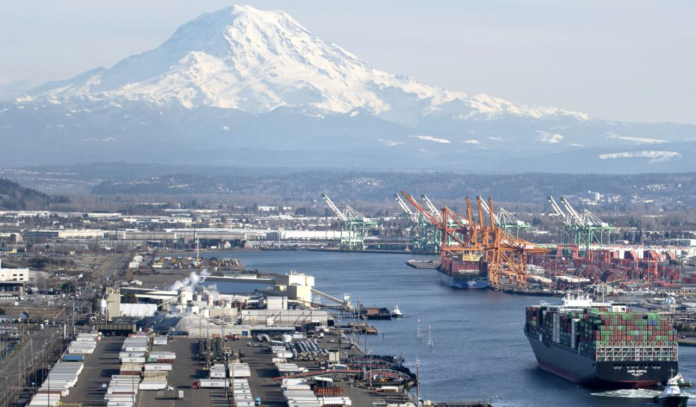
Every day, 15,000 cargo trucks drive on Interstate 5, emitting high levels of particulate pollution in South Tacoma and Tacoma’s South End. But truck counts are more than just a number for Gemini Gnull. It’s her reality, living between warehouses and one of the busiest cargo ports in the United States.
While the Washington State Department of Transportation doesn’t track the origins of trucks driving through this corridor, Gnull has experienced it firsthand: “There’s no way to separate the port and industry here.”
“The area is very polluted,” said Gnull, who is a longtime resident and advocate with the Climate Alliance of the South Sound, an organization founded to improve living conditions for the working class.
“All of Tacoma is polluted, but South Tacoma [is] in particular. Because of the affordable housing available to the poor, who are disproportionately marginalized by race and nationality, this area has become viable for the underprivileged to live in,” Gnull said.
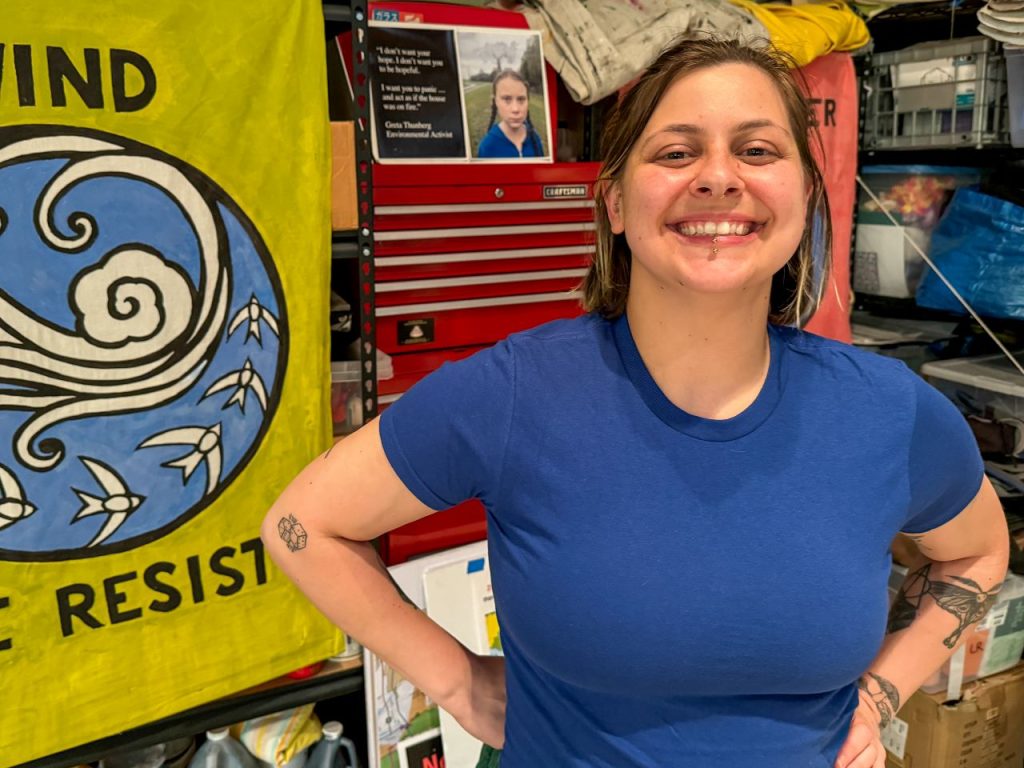
South Tacoma and the South End neighborhoods endure nearly the same level of diesel emissions each year as the Port of Tacoma itself. This pollution has high cancer risks and contributes to the lowest life expectancy levels in the entire city, according to local and federal environmental justice indexes.
But the port-related pollution — from vessels and trucks — may finally taper.
In June, the ports of Seattle and Tacoma announced the Puget Sound Maritime Air Forum’s emissions inventory — a count of greenhouse gasses within port boundaries, conducted every five years. According to the inventory, diesel particulate emissions from the Port of Tacoma have decreased by at least 80% since 2005, while the amount of freight moved has increased. It mirrors a broader trend of emissions reductions across Puget Sound ports.
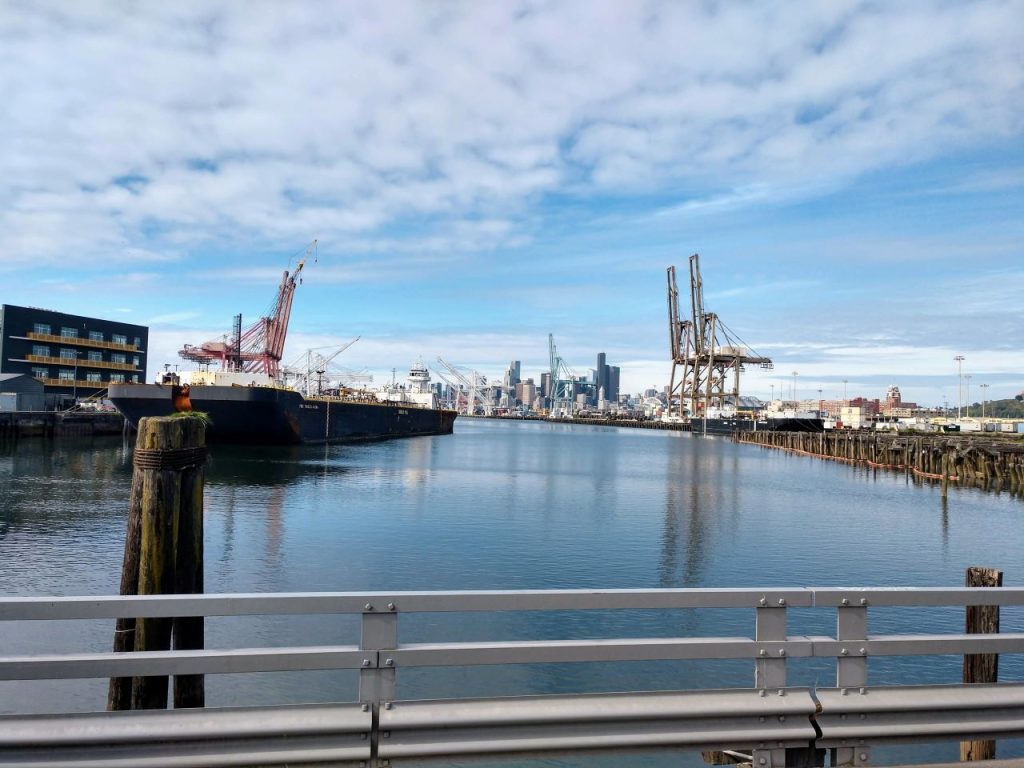
Port leaders credit the shift to their electrification projects and investments guided under the Northwest Ports Clean Air Strategy. However, their efforts are at risk, because the ports’ transition to clean energy is not regulated and relies almost entirely on government funding.
Much of the strategy’s $160 million in state funding largely comes from the Climate Commitment Act (CCA) that’s now up for repeal in this year’s election, according to Port of Seattle Commission Vice President Toshiko Grace Hasegawa. The legislature recently allocated another $35 million from the CCA in coming years for expensive upgrades.
While federal funding also supports the ports’ transition, local funding like the CCA is a competitive key to getting those grants. It demonstrates strong local commitment and can provide matching funds, often required to secure federal support.
“Our push for decarbonization would not be possible if not for the CCA,” Hasegawa wrote in a statement to The Urbanist. “At the port, we are striving toward our zero-emission commitment and have been making steady progress. However, when it comes down to it, funding is our biggest obstacle.”
The slow, costly transition to decarbonizing ports
The Port of Tacoma and Seattle’s best hope for the clean energy transition lies in the zero-emission commitments from commissioners to decarbonize maritime-related greenhouse gas emissions over the next three decades.
That’s because their pledge to achieve zero emissions by 2050 is voluntary, unlike other industrial changes driven by Washington’s Clean Energy Transformation Act. While that legislation set parameters for powering buildings and vehicles with fossil-fuel-free resources, and can indirectly support cleaner port operations, it does not specifically mandate rules for port infrastructure and freight activity.
State regulations, like those in California, have effectively supported clean energy adoption in ports by providing both rules and financial incentives for compliance. Once fully implemented, the California Air Resource Board anticipates a 55% reduction in potential cancer risk for port-adjacent communities.
In absence of specific regulation, the Washington state legislature is trying to help decarbonize ports through funding in the CCA. In the 2024 supplemental budget, the legislature funded $14 million for shore power — infrastructure that allows container ships to turn off their diesel engines and connect to the electrical grid.
The Northwest Seaport Alliance (NWSA), a federal maritime commission that manages cargo terminals for the ports of Tacoma and Seattle, manages such projects. They estimate that a ship connected to shore power for 40 hours avoids burning 10 tonnes of diesel fuels.
But the transition is slow, because of the high costs of underground wiring and plug points into the wharf.
“Ports aren’t a deep pocket,” said NWSA senior director Jason Jordan. “It’s really key to continue to be supported by state and federal grants if we’re serious about getting to zero emissions.”
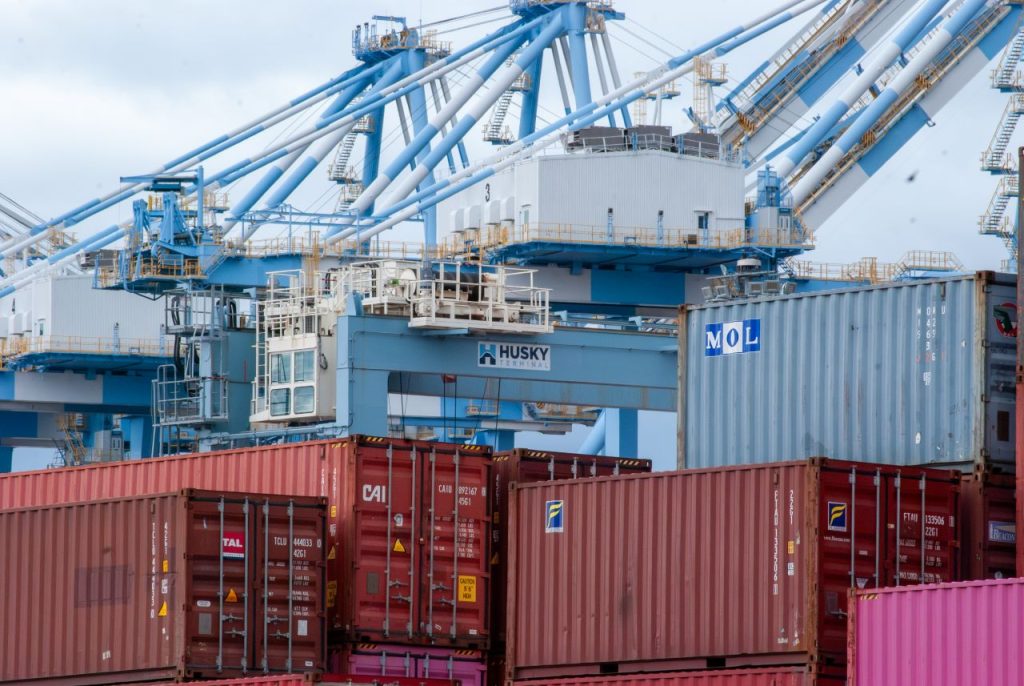
This year, Seattle’s Terminal 5 opened its second shore power plug-in, and renovations at Port of Tacoma’s Husky Terminal are reserving space for similar capabilities. But shore power does not address the emissions that happen on the way to and from port. Vessels out at sea are often too large and energy-intensive to be fully electrified.
In hopes of eventually finding a solution to this problem, the state legislature funded a $250,000 sustainable marine fuels framework.
“There are major questions in sustainable marine fuel that still need to be answered. There is no consensus on which fuel to use,” said Kurt Ellision, Maritime Policy Manager for Climate Solutions. “How will it be made? How will we guarantee what are our definitions of a sustainable or green fuel? And those are really challenging questions that can be only answered to a limited extent locally.”
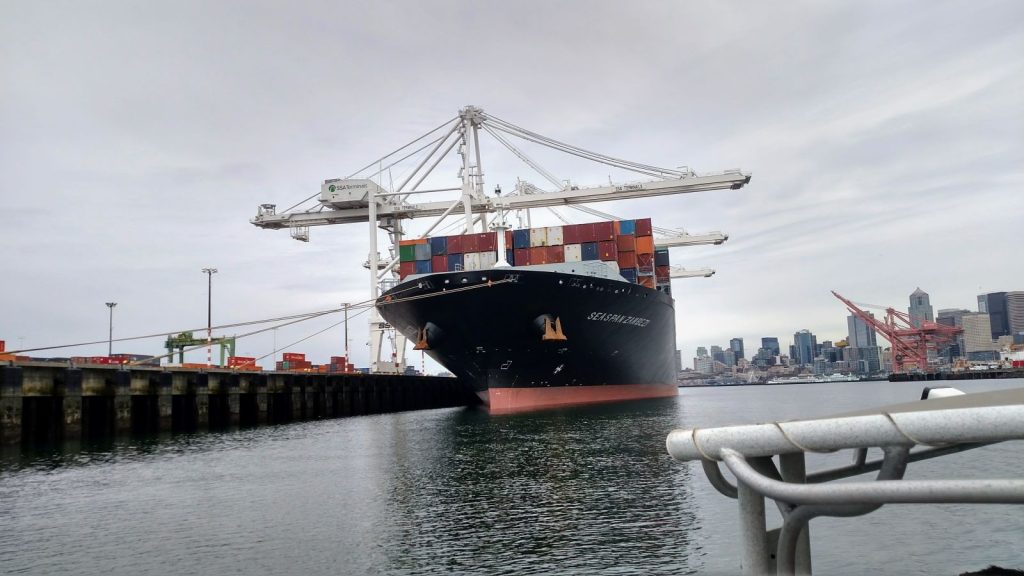
Ellison, who started his career as a deckhand, believes the shipping industry is years behind its decarbonization efforts, but that ports could be the next frontier in reducing climate pollution.
Electrification of trucks
Ports have the potential to serve as hubs for implementing cleaner technologies, a vision strongly supported by significant federal funding. This year, the Bipartisan Infrastructure Law created grants for new electric trucking hubs, and NWSA received $12 million for their own station to charge thousands of heavy-duty trucks.
“One of the interesting reasons [for] looking at ports and also focusing some of our investment dollars there is because ports are an intersection of all these different transportation types, whether that’s trucks, trains, vessels, cargo handling equipment,” Ellison said.
Nearly 4,000 short-haul trucks serve the ports of Seattle and Tacoma, going to nearby distribution centers and warehouses, but none of them are fully electric, according to Climate Solutions. Drivers often don’t have upfront capital to invest in electric vehicles, but a new state program — also funded by the CCA — is trying to offset that with point-of sale vouchers.
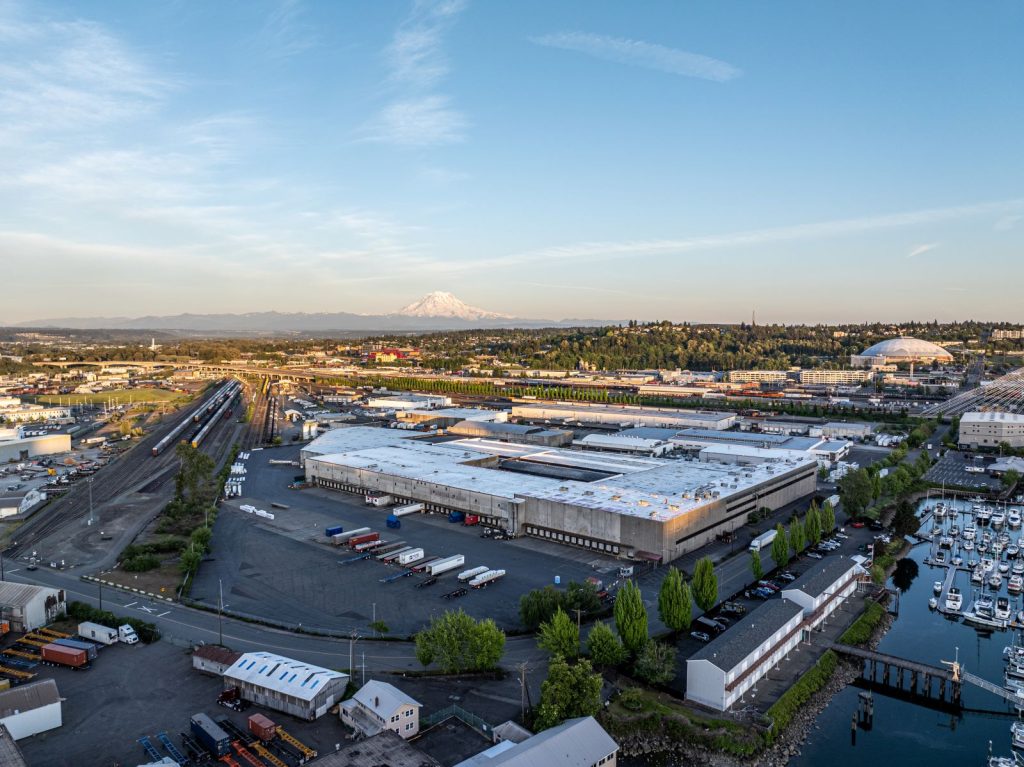
Fledgling truck electrification efforts come at a time of industrial expansion in Tacoma, with frontline communities of color bearing the brunt of the resulting pollution and traffic violence. Asians, Latinos, and Blacks collectively compose the majority in many of these frontline neighborhoods. Carbon emissions from trucks at the Port of Tacoma have increased by nearly 400 tonnes over the last four years, according to the maritime inventory.
NWSA told The Urbanist that the increase in emissions was due to prolonged idling times caused by Covid-19 related supply chain issues, which has now been resolved. However, advocates worry about a congested future that brings multi-layered threats to public health.
“Having electrical vehicles and moving to electric is a good thing,” said Gnull. “But we also need solutions that democratic and look at the needs of the people.”
As part of the Climate Alliance of the South Sound, Gnull has been rallying against the Bridge Industrial Project, a new 2.5 million-square-foot warehouse development in South Tacoma. Dubbed the South Tacoma Mega Warehouse by opponents, the development would result in thousands more carbon and diesel-emitting trucks on the roads, according to Earth Justice. Inhaling exhaust can give people asthma and other respiratory illnesses, and children – with developing bodies and lungs – are especially vulnerable.
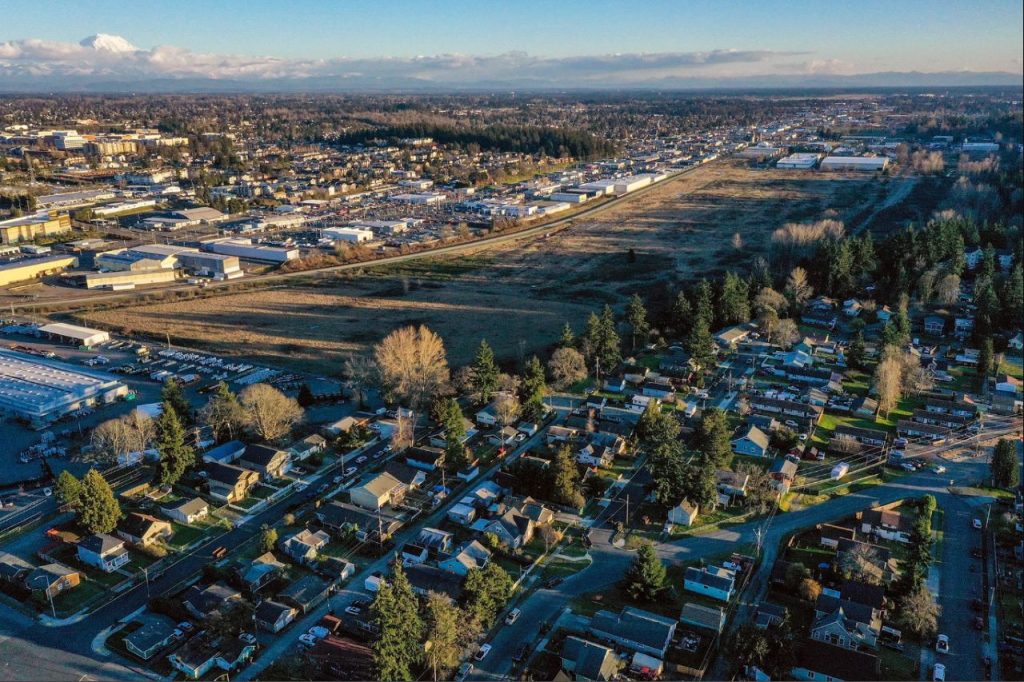
The City of Tacoma granted conditional approval for the project without requiring a full environmental review — a move that the Climate Alliance for South Sound has called environmental racism. This, in part, inspired state policymakers to propose the Cumulative Risk Burden (CURB) Pollution Act. Although it failed in this year’s session, CURB aimed to bolster the existing Healthy Environment for All (HEAL) Act with stronger enforcement mechanisms to deny permits for polluting facilities in overburdened communities.
For Gnull, climate justice work is personal.
As a member of the Osage Nation whose family fled from settler violence and eventually relocated to the Pacific Northwest, Gnull’s environmental activism is inspired by her Indigenous ancestry. She has protested in movements that successfully canceled plans for a methanol refinery, and strongly opposed the construction of a liquid natural gas plant in Tacoma. In 2019, her commitment deepened when her mother was hit and killed by a motorist in the South End.
“It’s the overall effects of increased traffic that I think has the bigger impact on our community,” said Gnull. “I can’t imagine the people whose children die from asthma. My mom, that’s tough, but it’s something that most of us are prepared for eventually. Losing a child? That’s different. It just breaks my heart, and I don’t want to see more of this. I want to see it get better.”

Ashli Blow
Ashli Blow is a Seattle-based freelance writer who talks with people — in places from urban watersheds to remote wildernesses — about the environment around them. She’s been working in journalism and strategic communications for nearly 10 years and is a graduate student at the University of Washington, studying climate policy.
